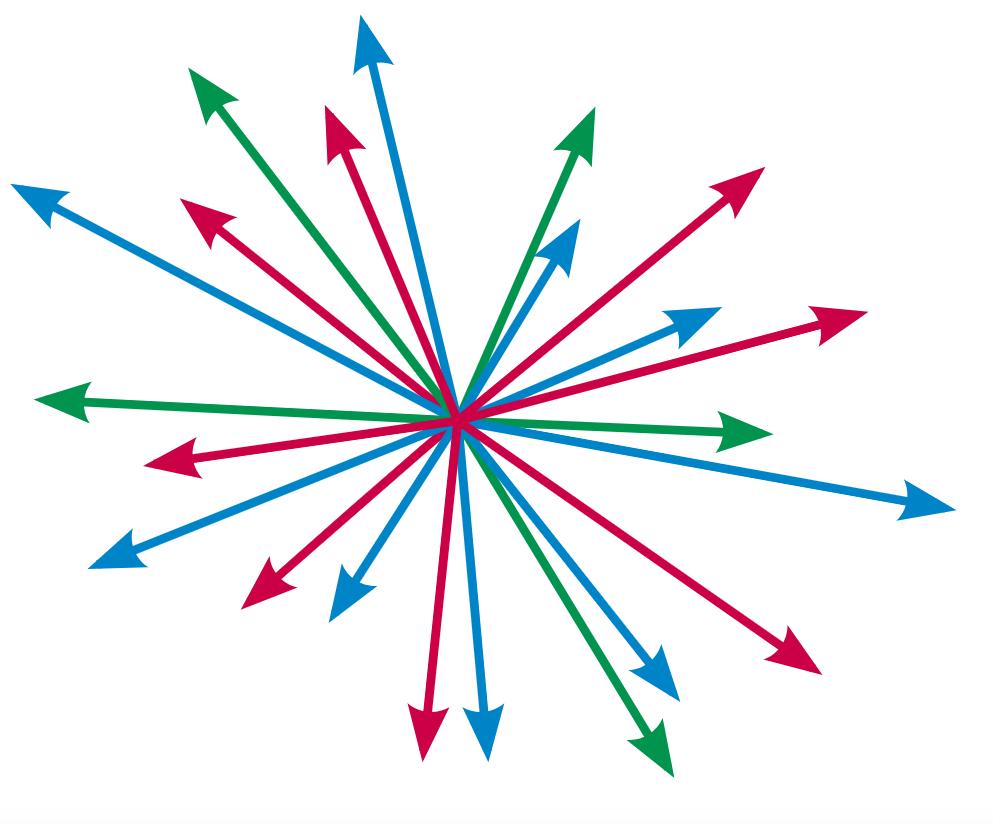Beyond ChatGPT

Oleg Alexandrov, vector space illustration. Public domain, via Wikimedia Commons.
Counterpath Press’s series of now thirteen computer-generated books, Using Electricity, offers a refreshing alternative to the fantasia of terror and wonder that we’ve all been subjected to since the public release of ChatGPT. The books in this series present us with wide-ranging explorations into the potential interplay between human language and code. Although code-based work can be dauntingly hermetic to the noncoder, all computationally generated or mediated writing is the result of two fundamental decisions that remain in the hands of the human author: defining the source text(s) (the data) and choosing the processes (the algorithms or procedures) that operate on them. A text generator like ChatGPT uses brute force on both sides—enormous amounts of text vacuumed from the internet are run through energy-intensive pattern-finding algorithms—to create coherent, normative sentences with an equivocal but authoritative tone. The works in Using Electricity harness data and code to push language into more playful and revealing imaginative territory.
Many of Using Electricity’s authors mobilize computational processes to supercharge formal constraints, producing texts that incessantly iterate through variations and permutations. In The Truelist, Nick Montfort, the series editor, runs a short Python script to generate pages of four-line stanzas comprising invented compound words. “Now they saw the lovelight, / the blurbird, / the bluewoman facing the horse, / the fireweed.” The poem is a relentless loop—repeating this same structure as it churns through as many word combinations as it can find. Rafael Pérez y Pérez’s Mexica uses a pared-down, culturally specific vocabulary and a complex algorithm to generate short fairy tale–like stories. One begins, “The princess woke up while the songs of the birds covered the sky.” The skeletal story structure swaps different characters and actions as the variations play out. It’s like watching a multiversal performance of the same puppet show.
I find that often I am not reading these works for meaning as much as for pattern, which is at the heart of how computation operates. Allison Parrish’s fantastic Articulations brings us frighteningly deep into the core of computational pattern searching. Drawing from a corpus of over two million lines of poetry from the Project Gutenberg database, she takes us on a random walk through “vector space.” Put simply, this is the mathematical space in which computers plot similarities between different aspects of language—the sound, the syntax, whatever the programmer chooses. The result is a dizzying megacollage/cluster-mash-up of English poetry in which obsessive and surprising strings constantly emerge—a vast linguistic hall of mirrors. “In little lights, nice little nut. In a little sight. In a little sight, in a little sight, a right little, tight little island. A light. A light. A light. A light. A light.”
Many of these works are indebted to the wider traditions of procedural, concrete, conceptual, and erasure poetry, while making use of code’s unique possibilities for play, chance, variation, and repetition. Stephanie Strickland’s Ringing the Changes draws its mathematical ordering process from a centuries-old practice of English bell ringing. In Experiment 116, Rena Mosteirin plays a game of translation telephone by running Shakespeare’s “Sonnet 116” through multiple languages in Google Translate and back into English.
The three most recent titles, released in April, comprise some of the series’s most varied and dynamic approaches to digital poetics. There is an updated edition of Image Generation by the pioneering literary artist John Cayley; as well as Qianxun Chen and Mariana Roa Oliva’s Seedlings, which uses the metaphor of seeds and trees, and “grows” word structures that evoke the dynamics and fragility of plant life. One of the most exciting titles thus far, especially from the perspective data source, is Arwa Michelle Mboya’s Wash Day, in which she threads together transcripts of YouTube videos of Black hair vloggers sharing their Wash Day rituals. The result is an immersive, polyvocal, multiauthored narrative that reveals the unique capacity of data and computation to give presence to specific communities. Wash Day provides an extraordinary contrast to the normalized, bulk-writing superstores of commercial text generators. That deep attention to language—its potential, its limits, its expressive capabilities, its necessity, and its fragility—is the central quality all these authors share. Hopefully works like theirs can help us imagine much more resonant and compelling digital futures.
Jonathan Thirkield is a poet, coder, and digital artist. He teaches computational media and digital arts at The New School, Parsons, and Columbia University. His second collection of poetry, Infinity Pool, is forthcoming from the University of Chicago Press in fall 2024. His poem “Antwerp (2)” appears in our new Summer issue, no. 244.
Copyright
© The Paris Review
